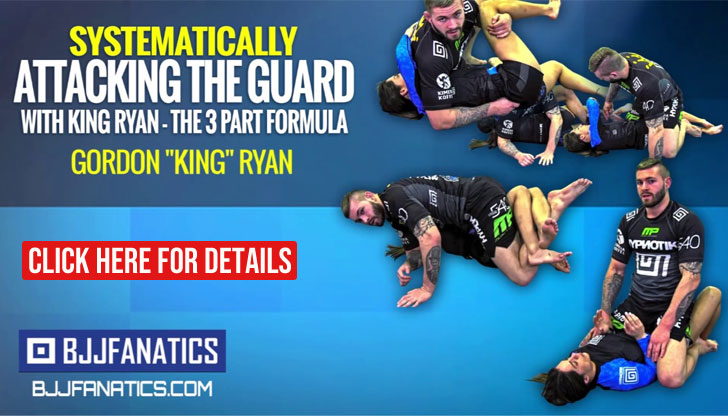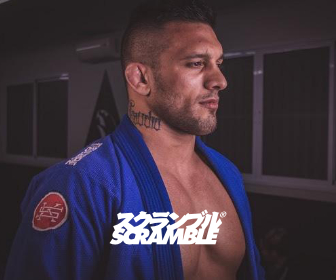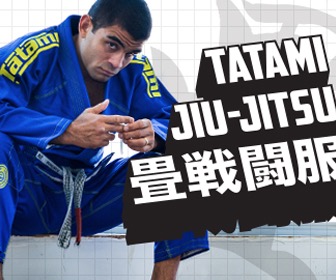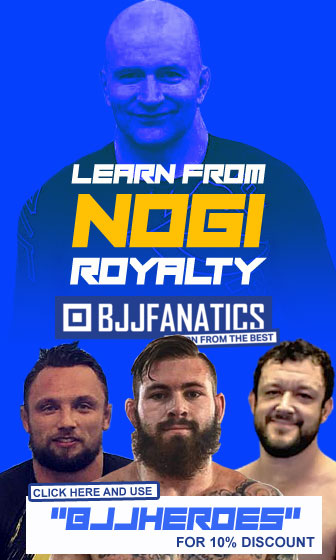George Gracie was an illustrious member of the Gracie family, and the first champion developed by the Gracie Jiu-Jitsu system back in the 1920s and 1930s. George Gracie was taught Jiu-Jitsu techniques by his older brother Carlos Gracie and carried the Gracie flag all over Brazil fighting in different styles such as Jiu-Jitsu, Luta Livre, Wrestling and Vale Tudo (No-Holds-Barred) having had one of the best unbeaten runs of his time.
George Gracie Jiu-Jitsu
Full Name: George Gracie
Nickname: “Gato Ruivo” which means red cat, a name given because of his tenacity when fighting and of course because of his hair color.
Lineage: Mitsuyo Maeda > Carlos Gracie > George Gracie
Main Achievements:
- N/A
Favourite Technique/Position: Armlock
Weight Division: Only fought absolute.
Team/Association: Gracie Jiu-Jitsu
George Gracie Biography
George Gracie was born in 1911, being the second youngest of the famous Gracie brothers. George came from a wealthy and respected family in his native town of Belem do Pará, but as the Gracies fell into a financial crisis with his father, Gastao Senior, losing his business, the family moved to Rio de Janeiro to start a new life and George’s life of luxury ended.
The Gracie’s were so poor at this point that they had to push the few influences they still had among the wealthy Brazilian families to survive. One of the measurements they took was to enroll Helio Gracie and George in a rowing club so they could be taken care of by the nautical association. George’s mother knew the president of the club (Clube Nautico do Botafogo) who agreed to receive the pair as part of the free boarding student scholarship the club had on offer, the younger brothers of the Gracie clan moved there where they were fed and bedded. George stayed the least amount of time at the club due to Carlos (the eldest brother). Carlos took him out of the club to have him instructed in the art of Jiu-Jitsu, the reason being, Carlos was opening his own Gracie Jiu-Jitsu Academy (the very first ever) and wanted his brothers to help in this new project of his. The first brothers taken to the Gracie Academy were George, Gastao, and Oswaldo, Helio only joined them at a later stage.
George and Oswaldo (who was 7 years older than George) soon became assistant coaches, but George proved to be a sponge when absorbing the grappling knowledge Carlos was handing out, becoming the “star pupil” at the gym. George and Carlos didn’t always get along, the older brother always enjoyed many different aspects of life from his spiritual beliefs to his obsession with dieting, the dieting aspect (today known as the Gracie Diet) often caused some turbulence as George did not believe in his brother’s concepts and always chose to eat what he pleased, not convinced of the benefits dieting could bring to his training. Carlos was very interested in boxing and together with George they started training in the western fighting style, the pair even competed in the late 1920s winning an amateur tournament.
As Carlos tried to show how effective his Jiu-Jitsu program was, several challenges were issued to the local martial artists. The “Capoeiristas” (Capoeira practitioners) were the first to accept. The very first organized event was named: Desafio Capoeira vs Jiu-Jitsu. George was matched with a stereotypical Rio de Janeiro Gangster and capoeira fighter. The fight was under what it is called today “Amateur MMA rules”, meaning, strikes were allowed on the feet, but not on the ground, so when the Capoeira fighter who went by the name of “Coronel” hit George’s face repeatedly on the ground, the fight was stopped and the victory awarded to George.
The next No Holds Barred event participated by the Gracie family caused controversy among the fighting community, George was put up against another Capoeira fighter who’s name was Jayme Martins Ferreira, George beat with an armlock, but it was Oswaldo Gracie’s fight that caused turmoil. Oswaldo was set to fight a very large greco-roman wrestler who was named Joao Baldi. Baldi weighed 135kg (297lbs) and was a mountain of a man. Everyone was waiting to see the Gracie be squashed by the big man, but instead, Oswaldo disposed of Baldi in 58 seconds with a guillotine choke. No one in the stands had ever witnessed such a one-sided fight with a size difference that big and immediately assumed the fight was a fix. The fighter (Baldi) didn’t help clear the air when (maybe trying to save face) he told the press that it was indeed a “marmelada” (fix) and that he would have never lost otherwise. When George read the interview in a newspaper, he was enraged and being the hothead he was, he went out seeking for Baldi. When he found him, he beat him up in a public square. The beating was such that Baldi was hospitalized, and when he came out he pressed charges against the Gracie stating that he had been beaten with brass knuckles, the police investigated the case, but as witnesses ditched the allegations stating that it was a fair fight, the case was closed.
In December 1931 George Gracie was set again to fight a “Capoeirista”, this time Mario Aleixo. Mario was a champion, being regarded as Capoeira’s last hope against the Gracie Jiu-Jitsu. The fight was a clean sweep for the Gracie once again who won with a quick armbar. The relationship between clan leader Carlos Gracie and George started deteriorating after the fight between Helio and Fred Ebert (one of Helio‘s first battles). This fight took place at the Sao Cristovao Atletico Clube and it lasted over 1 hour. Before any of the fighters gave up, the police intervened closing the show, stating that it was a gruesome spectacle. Ebert’s face was completely disfigured and he could barely stand but he hadn’t given up, so the fight was declared a draw. Carlos accepted the decision and moved on, but George was furious that the fight hadn’t been given to Helio and was extremely agitated towards Carlos for not sticking to Helio as the head of the family. Because of this, the relationship between the two brothers started its collision path, but at the time they managed to patch up and continued training together.
George’s golden period started around this same time. He drew against a Japanese Jiu-Jitsu fighter named Geo Omori but a succession of wins after the draw made his reputation reach an all-time high. That status was certainly cemented after the fight against Tico Soledade. Tico was somewhat of a celebrity in Rio de Janeiro, a powerlifter and arm wrestling champion with a luta livre background who loved a brawl. At the time of the fight Tico weighed in at 80kg (176lbs) against the 63kg (138lbs) of George, but size didn’t matter for the Gracie as he finished the fight in the second round with a “Mata Leao” choke. After the fight with Tico the “Gato Ruivo” as George was called, opened up his own academy. Even though he was still managed by his older brother the distance between the two was noticeable.
George was a wild man, always taking pleasure in the nightlife too much, but that didn’t seem to damage his unbeaten run as he continued winning fights. When he was called to fight Geo Omori once again, getting back into training mode, restarting his training with his brothers. George beat Geo Omori when after 10 rounds, the Japanese fighter refused to come back the ring. George’s playboy lifestyle continued after the fight with Omori and when he fought another Japanese fighter named Shigeo, he was almost caught. George was taken down and mounted but came back on the second round to finish Shigeo with a choke. This was the first warning that his lifestyle was catching up with his fighting career but George didn’t show signs of slowing down and continued fighting, competing in almost every event he could find, from luta livre to Jiu-Jitsu, Catch Wrestling and Vale Tudo.
In 1934 George spent a week in Jail together with his brothers Helio and Carlos. The 3 Gracies had been accused of beating up a former challenger, Manuel Rufino, who had placed charges against the Gracie trio. The court set them free after the prosecution failed to present any sort of evidence. George started spending more time with the Luta Livre fighters (a form of No-Gi Grappling very common in Brazil) and roaming further away from Carlos’s way of life. When George accepted another fight in luta livre rules, Carlos was very upset (as he believed George should stop fighting other styles and concentrate on BJJ), he told the press that George was no longer a representative of the Gracie way. George replied with some harsh words in a letter to the press, he wrote:
- “My brother Carlos is nothing when it comes to fighting. Carlos does not have the authority nor the competence to speak about Jiu-Jitsu… Who created the sporting tradition of my family if not me, in all honesty, with my career?”
But with the definite split between the brothers also came George’s first competitive loss. It happened on the 6th of October 1934 in Luta Livre rules against a polish fighter named Zbysco Waldek, George lost by armbar. This loss also marked a dark period in George’s sporting career as he drew on his following fight in Jiu-Jitsu rules against Takeo Yano. The rough patch was followed by the quiet year of 1935 were he fought lesser fights until in 1936 George rejoined the Gracie Academy and showed his true colors once again, replacing his brother Helio Gracie on short notice, he fought 3 opponents in one night winning against all of them. He went on to fight another made name in the wrestler and powerlifting champion George Ruhmann, also winning that fight. But he clashed against Carlos again when a fight promoter offered a great sum of money to put George against Helio on a ring. George accepted, but Carlos was completely against it and so the two brothers parted ways once again.
George went on to fight all over the country, moving to where the fights were at, again fighting every style out there. He came back to Rio de Janeiro months later to compete against a new Japanese fighter who had become a big name in the fight circuit, his name was Yassuiti Ono. George fought under Jiu-Jitsu rules and lost again due to a stranglehold. George was angered at himself but wasn’t convinced of the Japanese man’s technical abilities, he challenged Ono for a rematch, but Ono refused saying he wasn’t worthy of one, telling him he should fight his brother instead, an unknown fighter named Haditi Ono. This was a big step down for George and a risk to his reputation, but George accepted the challenge just so he could fight Yassuiti, he fought and won against Haditi but never received the rematch he wanted.
In 1938 Helio retired from competition (at the age of 25), as Carlos and Oswaldo had done before him, leaving George as the only true Gracie representative in the country. George fought for many years until he met the love of his life and moved to Sao Paulo to live the life of a businessman. However George never stopped being the wild man he was, always spending more money then he had, leaving him and his wife in dire straits on many occasions.
George’s bond to Carlos was never the same although they re-established contact with each other in the early 1950s. George had a heated exchange of words with Helio when he (George) returned to Rio and opened an academy. The argument started because George decided to open his academy and used the Gracie name to advertise it. Helio did not want George to use the Gracie name as he felt it should be relating to his academy only (The fact that George was charging a lot less then Helio was also part of the argument). In the end, George stood his ground but hindered his relationship with his younger brother.
All the information shared in this article was taken from the book: Carlos Gracie: The Creator of a Fighting Dynasty by Reila Gracie.
















Love it. I wish someone would write a book of the BJJ stories. I would love to know the background stories in details and the dark paths.
Love the article.
3 volume set by Roberto Pedreira first one is titled Choque I beleive first published Aug. 3rd 2015.
Buy the book "Carlos – o criador de uma dinastia" it tell all about the amazing cradle of Jiu Jitsu and the Gracie Family !
I did not know Carlos and George Gracie competed in boxing. Where did you find this source from? I find this interesting.
Hi Mike, this is in the book, "Carlos – o criador de uma dinastia". It is a must read about the Gracies. Hope it is translated one of these days.
It was translated, Carlos Graça – The Creator of a Dynasty by Reila Gracie (2008). It's sold out and I can't seem to find it. Anyone?
great article, I didn't know about George until now…it's amazing how marketing works, he went down into obscurity being the best fighter of the Gracie brothers … GO George!
Can someone answer why BJJ always stop short and trace their roots back to Maeda, instead of Jigoro Kano?
For those who don't know Maeda was one of Kano's student sent overseas to teach Judo (at the time people called it Kano Jujitsu), but the truth is that Maeda never practice Jujitsu, he did Sumo then started training under Jigoro Kano, before going over seas
Hey Guys! Why is there no Mention of George's fight against Euclydes "Tatu" Hatem, the founder of Luta LIvre?
2 boooks geo omori e jiujitsu o livro proibido this 2 books have greats e real histories about gracies e jiujitsu
Fiquei muito feliz e surpreso ao ver que meu querido e saudoso pai tem uma comunidade, gostaria de agradecer muito quem a fez, que com certeza sabe muito sobre meu pai e sua história e tambem admira-o muito como nós.
Muito obrigado em nome de nossa familia.
George Gracie Filho
If you read the heavily-researched “Choque” by Roberto Pedreira, it actual raises the question of how much time Maeda and Carlos spent together, and indicates that Carlos likely learned from another fellow that (Dos Reis?) who was certified by Maeda to teach. It also calls into question Carlos’ competition record – though George, whom I had never heard of before reading this book, seems to have competed a ton! I have the Carlos book, look forward to reading it next. Highly recommend Choque.
Have read both, great sources for sure. Choque is a bit anti Gracie, while Carlos' is pro, hard to decide which has the absolute truth.
I’ve heard short stories, but no body I talked to a read went so indepth, and im sure there’s more….. The History and the Lineage gets more and more interesting as time continues.
It does baffle me that another obvious contributer to the Art and Time line gets rarely mentioned or acknowledged.
The full spectrum of this story when put together is amazing and as complex as A Greek Tragedy…
I've heard stories from people who studied BJJ under Masters who were around at that time – one thing I remembered hearing them say was that their Masters spoke very highly of George's skills & abilities (almost the same way we talk about Rickson or Rolls today)
Sebastian If Maeda was taught by kano judo then he did learn jiu jitsu as thats where judo derived from. Kano was like the Gracies where in brazil. He formed his own version of jiu jitsu and named it Judo and the Gracies called it as you know Gracie jiu jitsu!